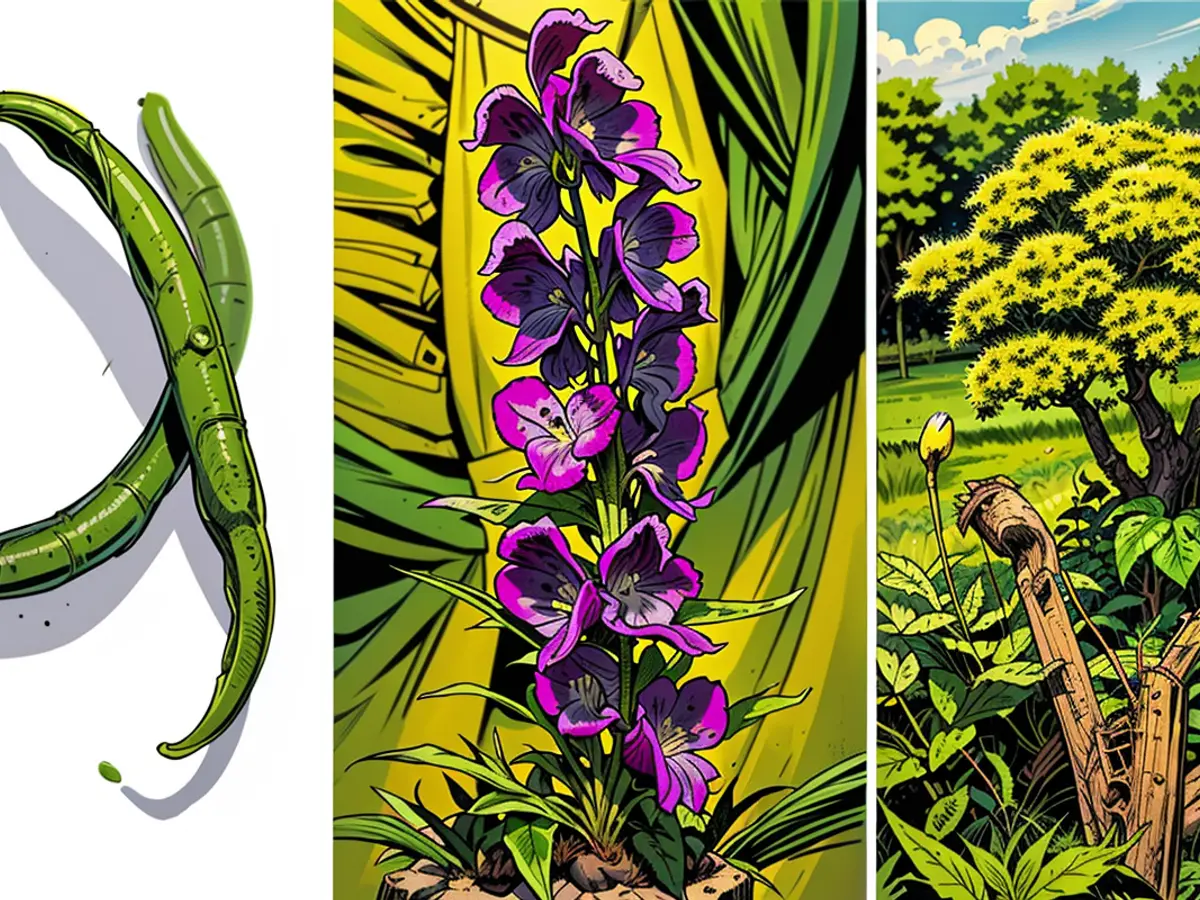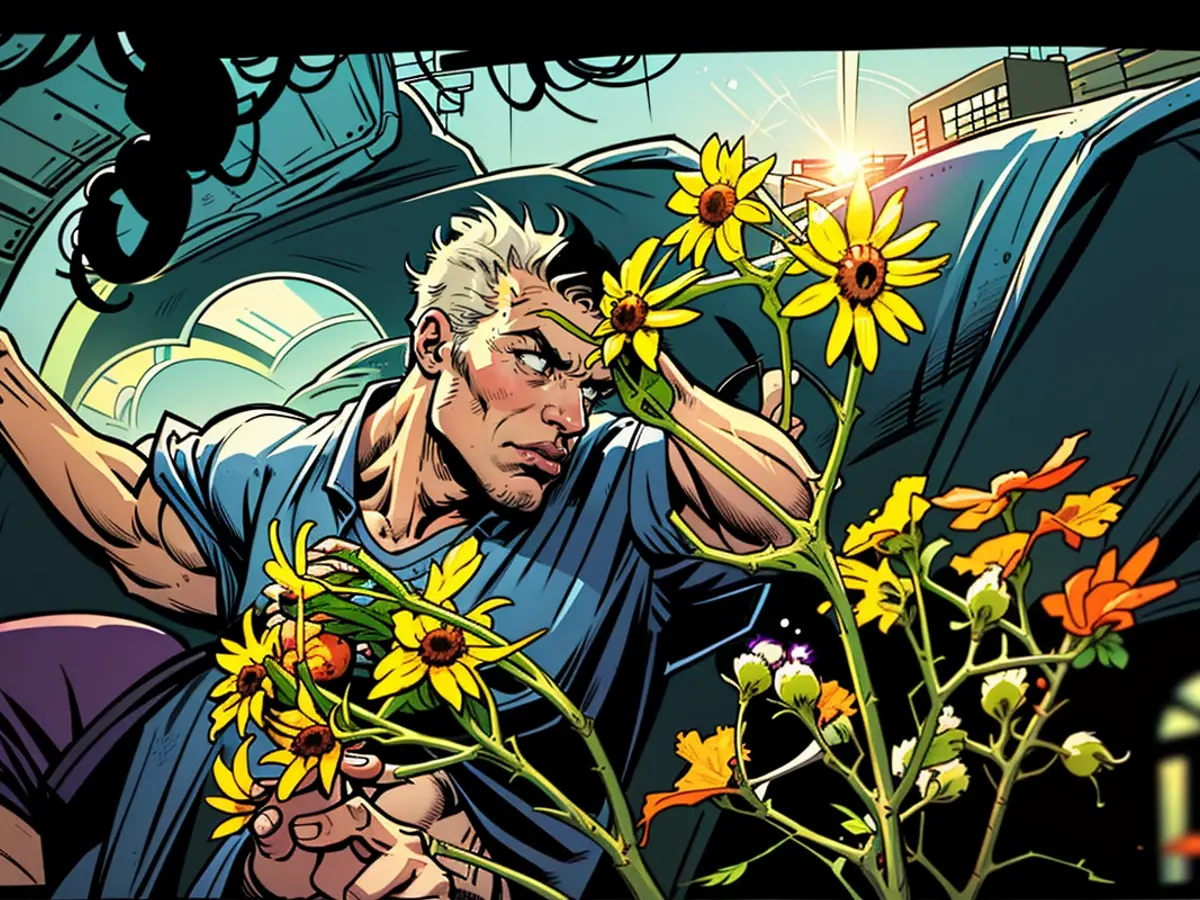- Poisoned St. James's wort spreads
The entire North is in full yellow blossom: the St. John's Wort. According to the Lower Saxony Chamber of Agriculture, its distribution has significantly increased in recent years. "It's popping up everywhere like mushrooms," said a spokesperson. While St. John's Wort is an important food source for insects, it contains pyrrolizidine alkaloids that are highly toxic to mammals. "We are watching its increasing spread with great concern," said a spokesperson for the Lower Saxony Ministry of Agriculture.
This native plant poses a particular threat to horses and cattle. On pasture, animals usually avoid it if there are enough alternatives, as it has a bitter taste. However, when dried, it loses this bitter taste, and animals may no longer be able to avoid its parts. The substances it contains can cause severe liver damage and even death in relatively small amounts. Therefore, according to the ministry, hay containing St. John's Wort should not be used as feed - neither for pets nor for farm animals.
St. John's Wort – Horse Keepers Are Alarmed
Control is difficult. Due to the strong spread of St. John's Wort, horse keepers are currently raising the alarm. Martina Gerndt of the Association of Leisure Riders and Drivers in Germany has again called for a challenge in the vicinity of Verden: the winner is whoever disposes of the most St. John's Wort properly from their pastures and meadows. She expects the amount of 2.5 tons from 2023 to be "far exceeded".
Gerndt wishes for a monitoring of St. John's Wort to be able to track its future spread. She also advocates for a "no-go zone" of 100 meters around horse pastures and meadows.
Ministry Refers to the Self-Responsibility of Farmers
However, the Ministry of Agriculture rejects mandatory no-go zones. "Blindly mowing strips is not effective," explained the spokesperson. Instead, the ministry refers to the self-responsibility of animal keepers and farmers. It advises keeping the grass cover dense and closed as a preventive measure. In cases of higher plant densities, the plants could be mowed before they bloom, or the area could be mulched. "If these measures do not work, the use of herbicides by competent persons may be necessary," the ministry states.
Nabu Lower Saxony points out that most farmers are not affected by St. John's Wort themselves. "With the usual means of grassland management in conventional agriculture, St. John's Wort has no chance on conventionally managed permanent pastures and meadows," emphasized a spokesperson.
Therefore, St. John's Wort is mainly found on abandoned areas, extensively managed pastures and meadows, but also on unused areas. Such an area is located next to Maike Rottstegge-Koch's pony farm with greenland for fodder cultivation in the district of Plön in Schleswig-Holstein. An adjacent arable fallow area is completely covered with St. John's Wort. "Really, nothing else grows there anymore," says Rottstegge-Koch. She criticizes that, for arable fallows, for which farmers receive a lot of money according to EU regulations, no attention is paid to the diversity of plants.
Each plant can produce up to 150,000 flight-capable seeds.
Due to her concern for her ponies, Rottstegge-Koch regularly inspects her areas and pulls out the plants - a Sisyphean task. Similar to dandelions, the plant produces up to 150,000 viable seeds per plant after flowering, according to Lower Saxony's farmers' association. "Even if it's only 10,000: one seed can survive in the soil for 15 to 20 years," says Rottstegge-Koch.
She advocates for distance obligations and a removal claim, and refers to a control obligation in Switzerland. "Here, those affected are dependent on the 'goodwill' of their neighbor," says Rottstegge-Koch.
However, NABU rejects both early mowing of the plant and mulching of nature conservation areas. This would, among other things, destroy natural structures of meadow ants and remove nests of ground breeders such as the whinchat, quail, or common stonechat, a spokesperson said.
Bloodbear can help
Farmer Andreas Frahm from Neuengörs in Schleswig-Holstein has been using a different method to remove the plant since 2008: the bloodbear - also known as the Jacob's cross bear. This is a butterfly whose caterpillar eats the poisonous plant. According to his own statements, Frahm has developed a method with which he can make affected areas almost free of the plant within four years.
He shares his knowledge with farmers, horse owners, authorities, and municipalities. "It's best to tackle whole villages at once," says Frahm. According to his own statements, there are currently 150,000 hectares of agricultural land in Germany in the process of being cleared using his method. "That's already a significant number. But in Germany, three million hectares are currently affected or threatened," says Frahm.
In an effort to combat the spread of St. John's Wort in pastures, Martina Gerndt from the Association of Leisure Riders and Drivers in Germany has organized a challenge in Verden, aiming to dispose of large amounts of the plant from local pastures and meadows.
The threat of St. John's Wort is not only a concern in Germany but also extends to farms in Schleswig-Holstein. Maike Rottstegge-Koch, a pony farm owner in the district of Plön, battles with the plant's invading arable fallow area, with each plant capable of producing up to 150,000 viable seeds.









